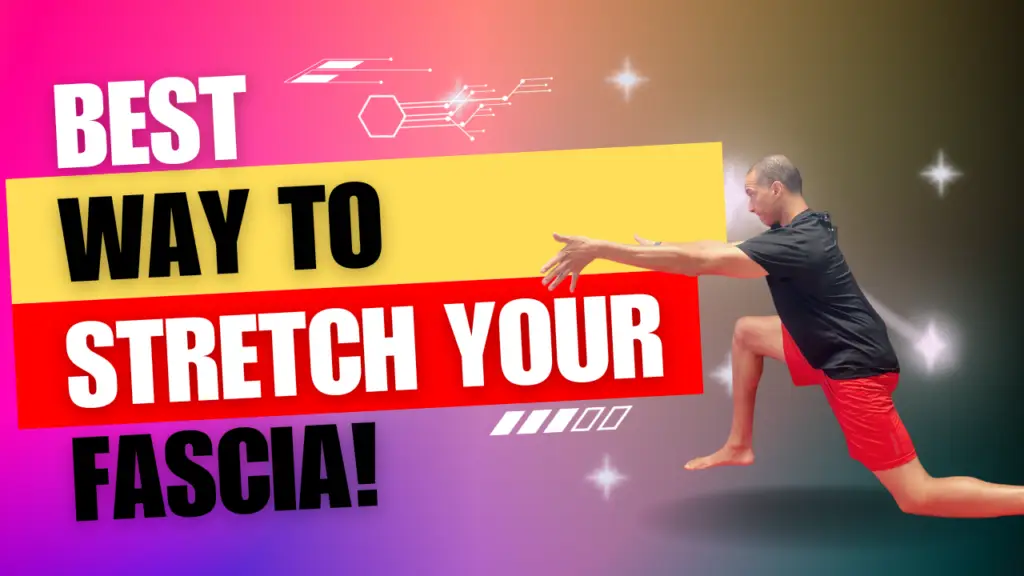
Click on the image to watch 👆🏽
Fascia is finally having its moment in the spotlight—and it should. This vital tissue is responsible for connecting and supporting your body in ways most people don’t even realize. But while “fascia” has become a buzzword, most of the information circulating about fascia stretching is either incomplete, outdated, or outright wrong.
You might see videos or articles that apply the same old exercise routines from the ’80s and ’90s and simply call it “fascia training.” The truth? Fascia is a unique, intelligent tissue, and it demands a specific and respectful approach if you want to stretch and train it correctly.
Let’s break down what fascia is, why it matters, and how to stretch it properly using science-backed, body-respecting methods.
What Is Fascia?
Fascia is connective tissue — a living network made up of cells, fibers, and an internal matrix. It surrounds and connects everything in your body, from your muscles and bones to your nerves, arteries, and even organs.
Think of it like an interconnected spiderweb that runs from head to toe, fingertip to fingertip. It’s not just the white stuff you peel off meat — it plays active roles in:
- Circulation
- Structure and posture
- Communication
- Immune defense
- Mobility
- Energy transfer
- Protection and scarring
And one of its most important features is its ability to carry fluid through microscopic tubes. These tubes — when working properly — transport nutrients and remove waste efficiently. But here’s the key: Fascia must stay hydrated, intact, and unobstructed to perform these roles well.
What Science Says About Fascia Stretching
Many people (and even some professionals) make the mistake of applying aggressive techniques like foam rolling or Graston scraping, thinking they’re helping their fascia. In reality, these methods can crush the delicate tubes in the fascial network, causing more harm than good.
Proper fascia stretching requires:
- Respect for the fascial chains — long lines of muscles and tissue that connect across the body
- Precise anatomical knowledge — so you know which direction and angle to stretch
- Global tension — stretching from the tip of your toes to the tip of your fingers
- Gentle, sustained force — to loosen the tissue without damaging it
Two methods that truly honor these requirements are Myofascial Stretching and Global Postural Stretching (GPS). Myofascial stretches target specific chains; GPS works with full-body tension and alignment. Both respect the body’s biotensegrity—its balance of tension and compression that maintains structure and function.
An Example of How Fascia Chains Work
Let’s look at one fascial chain: from your heel up through your lateral calf, into the hamstring (biceps femoris), through the glutes, into your back, and out to your arm. This chain includes:
- Lateral gastroc
- Biceps femoris
- Gluteus maximus
- Thoracolumbar fascia
- Latissimus dorsi
To stretch one part of this chain — say, the biceps femoris — you’d need to:
- Do the opposite action of that muscle (extend the knee, flex the hip)
- Align the stretch globally, with tension from feet to fingertips
- Stretch in sequence, respecting the full chain
You can’t isolate fascia. It’s not how the tissue works.
What Not to Do
A client once came to me after receiving Graston technique for Achilles tendonitis and plantar fasciitis. Her condition worsened — not surprising, considering the aggressive scraping tore at her already compromised fascial tissue.
We used gentle fascial techniques and specific stretches for the calves and soles of the feet. She was 90% better after one session — and 100% better within weeks.
Moral of the story: Work with your fascia, not against it.
How to Build a Fascia Stretching Program
- Start with a specific chain — For example, stretch your biceps femoris
- Add related structures — Include lateral gastroc, glute, lat, etc.
- Stretch each muscle 3x for 30 seconds — This is a good starting point backed by research
- Balance the body — Create an A program (focused chain) and a B program (balancing chain)
We’ll never be fully balanced all the time — life pulls us in different directions. But regular myofascial stretching keeps your system in harmony and functioning at its best.
Final Thoughts
Fascia isn’t something you can treat casually. It’s complex, vital, and deeply intelligent. When you stretch it correctly, it rewards you with better movement, reduced pain, improved posture, and enhanced body function.
Want to dive deeper into fascia stretching and holistic body care?
👉🏽 Reach out for a complimentary consultation
Stay tuned for more fascia-focused, science-backed content — and treat your tissue with the respect it deserves.
it’s not just working out, it’s building a foundation for a better life.
Find out more @

Leave a Reply